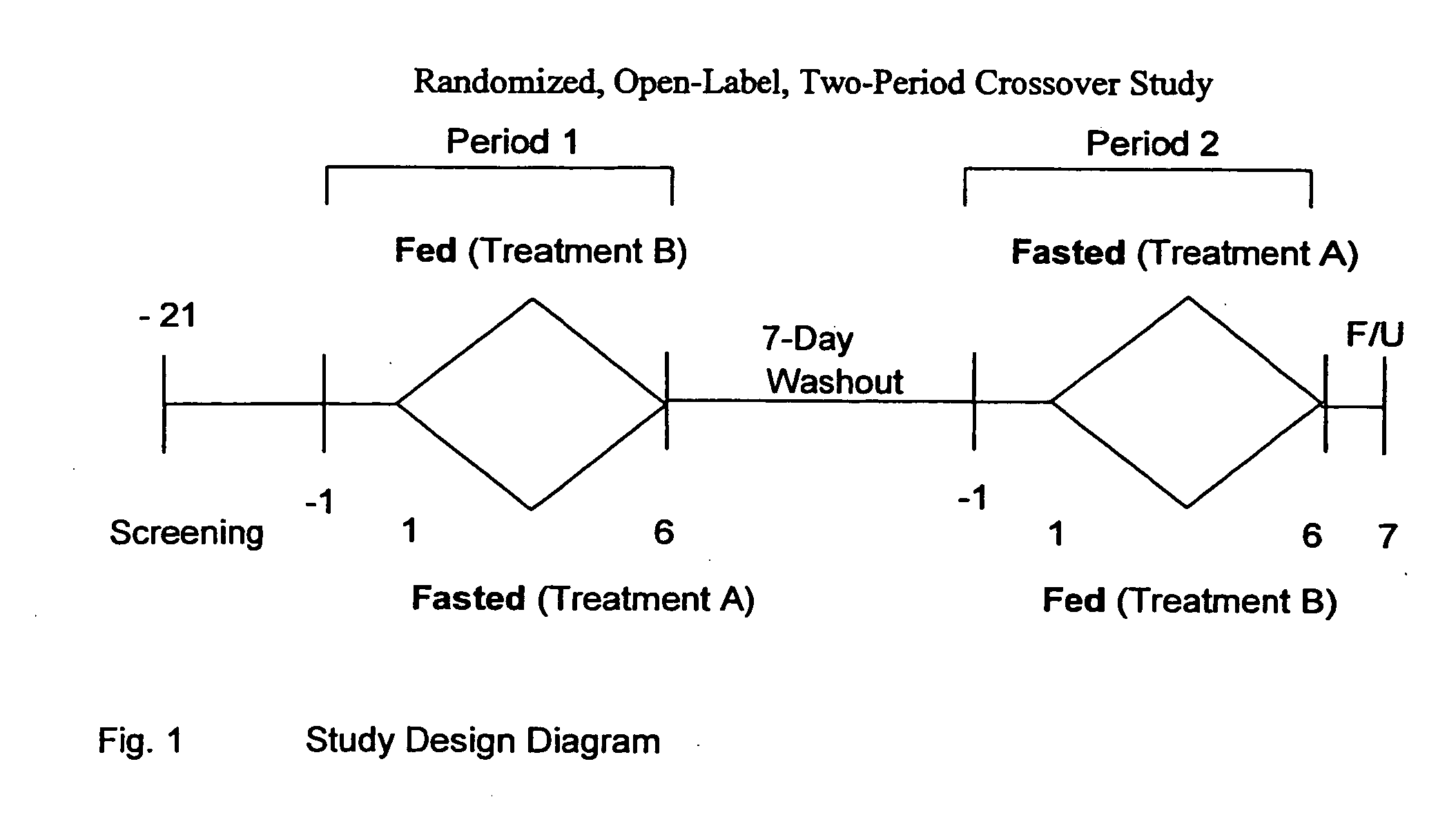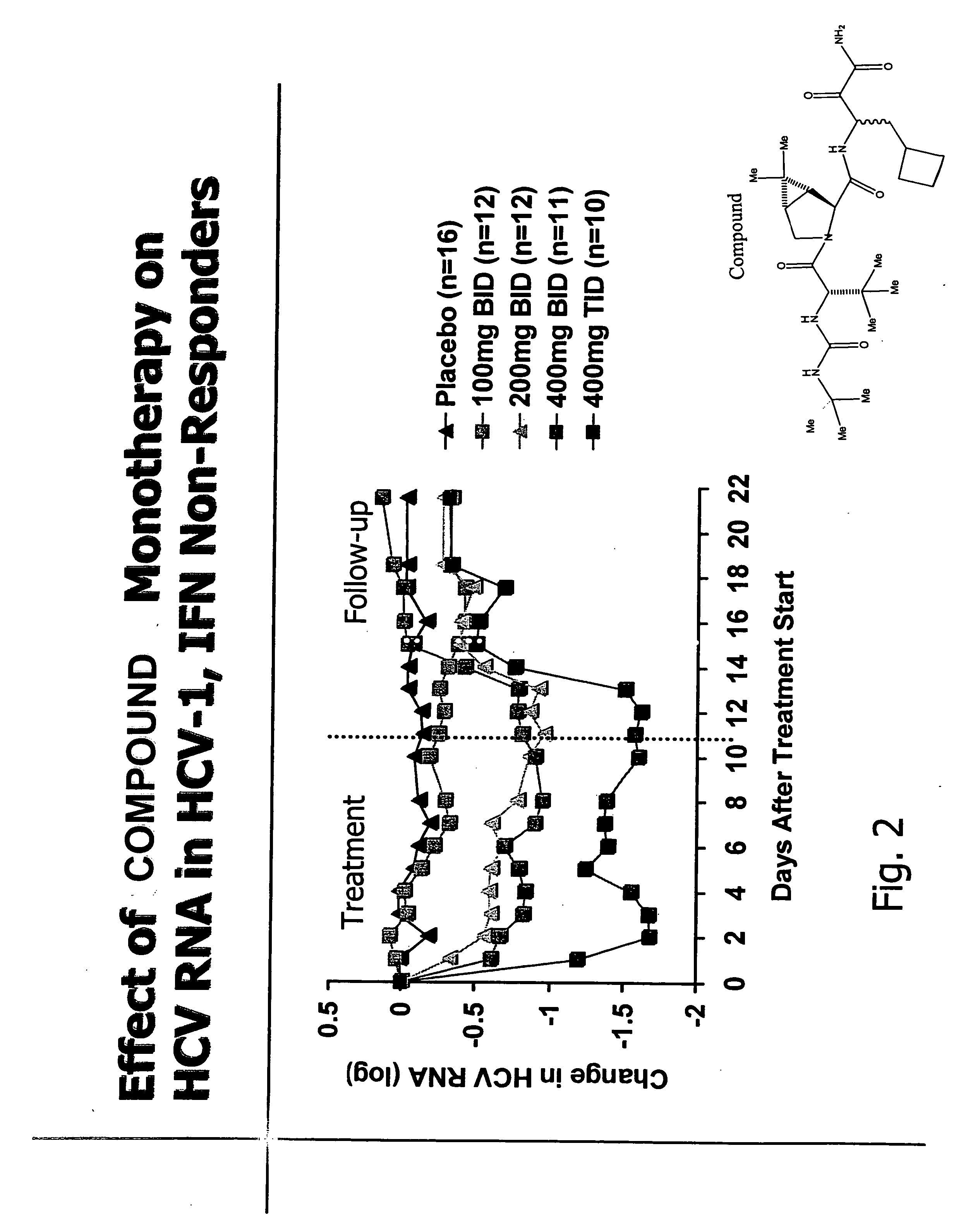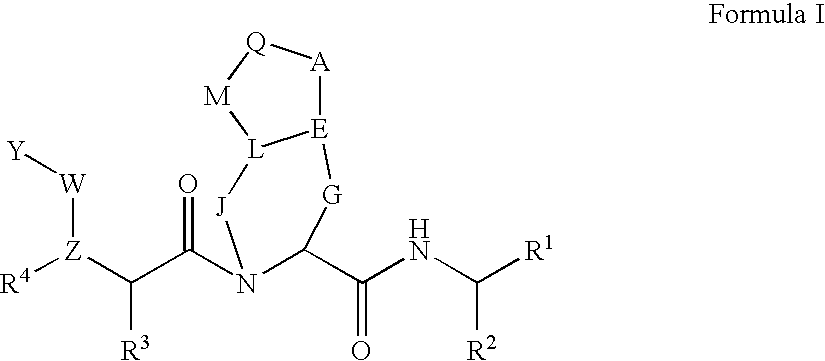Liver/plasma concentration ratio for dosing hepatitis C virus protease inhibitor
- Summary
- Abstract
- Description
- Claims
- Application Information
AI Technical Summary
Benefits of technology
Problems solved by technology
Method used
Image
Examples
example a
PREPARATIVE EXAMPLE A
[0870]
Step 1
[0871] A solution of acid 1 (255 mg) in 5 mL of dry dichloromethane and 5 mL of dry DMF was stirred at 0° C. and treated with HATU (368 mg). The amine hydrochloride 2 (201 mg) was added followed by addition of N-methylmorpholine (0.42 mL). The reaction mixture was gradually warmed to room temperature and stirred overnight. All the volatiles were removed under vacuum and the residue was taken into 100 mL of ethyl acetate. The organic layer was washed with aqueous 1 N HCl (15 mL), aqueous saturated NaHCO3 (15 mL), water (15 mL), brine (15 mL), dried over MgSO4, filtered, and concentrated under reduced pressure to afford the desired product A1. No further purification was carried out for the product.
Step 2
[0872] A solution of A1 (360 mg) in 20 mL of a 1:1 mixture of toluene / DMSO was treated with EDCl (1.3 g) and dichloroacetic acid (0.42 mL, d 1.563). Reaction mixture was stirred at room temperature for about 3 h. The reaction mixture was diluted w...
example 101
Synthesis of Example 101
[0926] Step 1
[0927] To a stirred solution of the proline derivative 1.01 (3.66 mmol, prepared as described above) in dichloromethane (20 mL) and DMF (15 mL) at 0° C. was added L-boc-tert-leucine (930 mg, 4.03 mmol), DIPEA (2.02 mL, 10.98 mmol) and HATU (1.8 g, 4.76 mmol). After 15 minutes at that temperature, the reaction flask was stored in the freezer (−20° C.), overnight (16 hr). The reaction mixture was diluted with dichloromethane (80 mL) and washed with saturated sodium bicarbonate solution (80 mL), 10% aq. citric acid solution (80 mL), brine (80 mL), dried (Na2SO4), filtered and concentrated. The crude material was purified by silica chromatography using 25 / 75 to 50 / 50 EtOAc / hexanes to provide 1.77 g of the required material, 101a. LC-MS: 518.1 (M+H)+.
Step 2
[0928] To a solution of the methyl ester 101a (1.21 g, 2.34 mmol) in THF (10 mL) and MeOH (5 mL) was added aq. 1M LiOH solution (5 mL). The reaction mixture was stirred at RT for 4 h. It was the...
example
Synthesis of (1R,5S)-N-[3-Amino-1-(Cyclobutylmethyl)-2,3-Dioxopropyl]-3-[2(S)-[[[(1,1-Dimethylethyl)Amino]Carbonyl]Amino]-3,3-Dimethyl-1-Oxobutyl]-6,6-Dimethyl-3-Azabicyclo[3.1.0]Hexan-2(S)-Carboxamide (Structure Ia)
[0959]
Step 1.
[0960] A stirred solution of the ketimime 1a′ (50 g, 187.1 mmol, available from Aldrich Chemical Company, Milwaukee, Wis.) under N2 in dry THF (400 mL) was cooled to −78° C. and treated with 1 M solution of K-tBuO (220 mL, 1.15 equiv.) in THF. The reaction mixture was warmed to 0° C. and stirred for 1 h and treated with bromomethylcyclobutane (28 mL, 249 mmol). The reaction mixture was stirred at room temperature for 48 h and concentrated in vacuo. The residue was dissolved in Et2O (300 mL) and treated with aq. HCl (2 M, 300 mL) The resulting solution was stirred at room temperature for 5 h and extracted with Et2O (1 L). The aqueous layer was made basic to pH˜12-14 with aq. NaOH (50%) and extracted with CH2Cl2 (3×300 mL). The combined organic layers were...
PUM
| Property | Measurement | Unit |
|---|---|---|
| Fraction | aaaaa | aaaaa |
| Time | aaaaa | aaaaa |
| Time | aaaaa | aaaaa |
Abstract
Description
Claims
Application Information
 Login to View More
Login to View More - R&D
- Intellectual Property
- Life Sciences
- Materials
- Tech Scout
- Unparalleled Data Quality
- Higher Quality Content
- 60% Fewer Hallucinations
Browse by: Latest US Patents, China's latest patents, Technical Efficacy Thesaurus, Application Domain, Technology Topic, Popular Technical Reports.
© 2025 PatSnap. All rights reserved.Legal|Privacy policy|Modern Slavery Act Transparency Statement|Sitemap|About US| Contact US: help@patsnap.com



